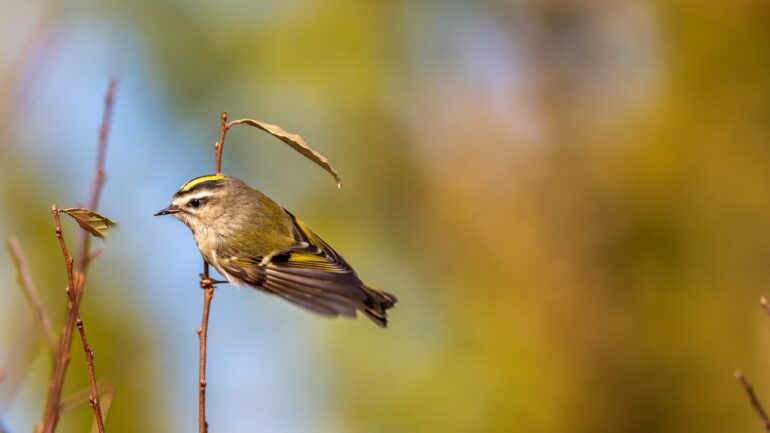Birds across the Americas are getting smaller and longer-winged as the world warms, and the smallest-bodied species are changing the fastest.
That’s the main finding of a new University of Michigan-led study scheduled for online publication May 8 in the journal Proceedings of the National Academy of Sciences.
The study combines data from two previously published papers that measured body-size and wing-length changes in a total of more than 86,000 bird specimens over four decades in North and South America. One study examined migrating birds killed after colliding with buildings in Chicago; the other looked at nonmigrating birds netted in the Amazon.
Though the two datasets are nonoverlapping in both species composition and geography, and the data were collected independently using different methods, the birds in both studies displayed similarly widespread declines in body size with concurrent increases in wing length.
Now, a new analysis of the combined data has revealed an even more striking pattern: In both studies, smaller bird species declined proportionately faster in body size and increased proportionately faster in wing length.
“The relationships between body size and rates of change are remarkably consistent across both datasets. However, the biological mechanism underlying the observed link between body size and rates of morphological change requires further investigation,” said U-M ornithologist Benjamin Winger, one of the study’s two senior authors, an assistant professor of ecology and evolutionary biology, and an assistant curator at the Museum of Zoology.
Both the Chicago and Amazonian studies attributed the reductions in species body size to increasing temperatures over the past 40 years, suggesting that body size may be an important determinant of species responses to climate change.
Even so, exactly why smaller-bodied species are changing faster remains an open question, according to the researchers.
It could be that smaller-bodied birds are adapting more quickly to evolutionary pressures. But the available data did not allow the U-M-led team to test whether the observed size shifts represent rapid evolutionary changes in response to natural selection.
“If natural selection plays a role in the patterns we observed, our results suggest that smaller bird species might be evolving faster because they experience stronger selection, are more responsive to selection, or both,” said co-senior author Brian Weeks, an evolutionary ecologist at the U-M School for Environment and Sustainability.
“Either way, body size appears to be a primary mediator of birds’ responses to contemporary climate change.”
So, if larger-bodied birds are responding more slowly to global change, what’s the prognosis for the coming decades, as temperatures continue to climb?
“Our results suggest that large body size could further exacerbate extinction risk by limiting the potential to adapt to rapid, ongoing anthropogenic change,” said study lead author Marketa Zimova, a former U-M Institute for Global Change Biology postdoctoral researcher now at Appalachian State University.
“In contrast, the body-size effect on evolutionary rates might increase persistence of small taxa if their rapidly changing morphology reflects a faster adaptive response to changing conditions.”
The new study analyzed data from 129 bird species: 52 migratory species breeding in North America and 77 South American resident species. The 86,131 specimens were collected over roughly the same period using different techniques.
The smallest bird among the Chicago species was the golden-crowned kinglet (Regulus satrapa) at an average size of 5.47 grams, and the largest was the common grackle (Quiscalus quiscula) at 107.90 grams. Among the Amazonian species, the fork-tailed woodnymph (Thalurania furcata) was the smallest at 4.08 grams, and the largest was the Amazonian motmot (Momotus momota) at 131.00 grams.
The North American dataset was derived from birds
